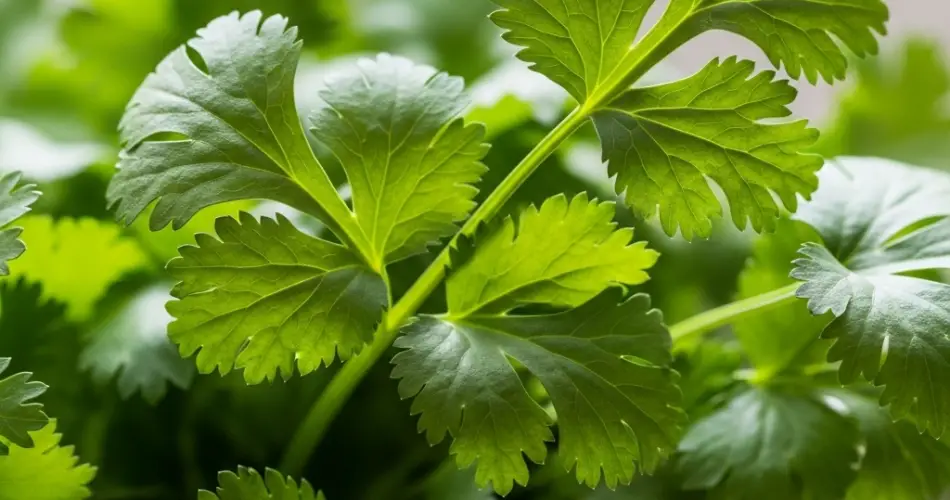Coriander, also known as cilantro, is a beloved herb in many kitchens for its fresh, citrusy flavor. While it grows quickly and is easy to start from seed, coriander also has a short life cycle and is prone to bolting—going to seed—especially in hot weather. If you’ve struggled to keep your coriander producing throughout the growing season, you’re not alone. Fortunately, with the right strategies, you can significantly extend its harvest period and enjoy fresh leaves for months.
Here’s how to keep your coriander healthy, leafy, and productive for as long as possible.
1. Choose the Right Variety
Start by selecting a slow-bolting variety of coriander. Some cultivars are specially bred to resist bolting, giving you more time to harvest before the plant transitions to seed production.
Look for varieties labeled as “slow-bolt,” “long-standing,” or “Santo.” These types are more tolerant of heat and longer days, making them ideal for extending the season.
2. Start Early and Stagger Plantings
Coriander grows best in cooler weather, typically between 15°C and 25°C (59°F to 77°F). Begin sowing seeds early in spring as soon as the soil can be worked.
To extend your harvest:
-
Sow small batches every 2–3 weeks to maintain a continuous supply.
-
Continue succession planting throughout spring and early summer.
-
In warmer climates, resume sowing in late summer or early autumn when temperatures begin to drop again.
By staggering your planting schedule, you’ll have fresh new plants coming up just as older ones begin to fade or bolt.
3. Provide Partial Shade in Summer
Coriander bolts quickly in response to heat and long daylight hours. To delay bolting during warmer months:
-
Provide afternoon shade or dappled light, especially if temperatures consistently exceed 25°C (77°F).
-
Use shade cloth, position pots near taller plants, or grow it on the east side of a wall or fence where it gets morning sun and afternoon shade.
Reducing the heat stress and light intensity helps keep coriander from flowering too early.
4. Keep Soil Moist (But Not Wet)
Coriander prefers consistently moist but well-draining soil. Fluctuations in moisture—such as drying out and then being soaked—can stress the plant and trigger bolting.
To keep soil conditions stable:
-
Water regularly, aiming for even moisture without waterlogging.
-
Apply a light mulch around plants to help conserve moisture and regulate soil temperature.
-
Use drip irrigation or soaker hoses if possible for more consistent watering.
Avoid letting the plant dry out completely, especially in hot weather.
5. Harvest Often and Early
Frequent harvesting can help extend coriander’s lifespan. When you regularly trim the outer leaves:
-
The plant is encouraged to produce more foliage.
-
Flowering is delayed, especially if the plant hasn’t yet matured fully.
Harvest leaves in the morning when their flavor is most concentrated, and always take from the outermost stems, leaving the center to continue growing. If you notice flower stalks forming, snip them off immediately to redirect energy back to leaf production.
6. Use Containers for Better Control
Growing coriander in pots gives you greater control over light, moisture, and temperature. Containers can be moved around to suit the weather—into shade during heatwaves or under cover during heavy rain.
-
Choose wide, shallow pots for best root spread.
-
Use well-draining potting mix enriched with compost.
-
Monitor watering more frequently, as pots dry out faster than garden beds.
Container-grown coriander is perfect for patios, balconies, and small spaces, and is easy to rotate for optimal growing conditions.
7. Feed Lightly But Regularly
Coriander is a light feeder, but regular nutrition helps keep it growing vigorously.
-
Apply a balanced, organic liquid fertilizer every 2 to 3 weeks.
-
Avoid high-nitrogen fertilizers that promote excessive soft growth, which can attract pests.
If growing in rich soil or with compost, you may not need to feed at all. But for container-grown plants or those in poor soil, a little boost helps extend their productive phase.
8. Let Some Plants Go to Seed for Replanting
Even with all your best efforts, some coriander plants will eventually bolt. Don’t discard them—instead, let a few go to seed.
-
Collect the dried seeds to sow for the next round of plants.
-
Alternatively, allow them to self-seed naturally in the garden, where they’ll sprout on their own when conditions are right.
Saving your own seeds not only ensures a continuous supply but also encourages more heat-resilient plants over time.
Final Thoughts
Extending the coriander growing season requires a balance of timing, care, and clever management of light and moisture. By choosing slow-bolting varieties, practicing staggered sowing, protecting plants from excessive heat, and harvesting frequently, you can enjoy fresh coriander well beyond the early part of the season.
With just a few simple adjustments, your coriander plants can continue producing fragrant, flavorful leaves for much longer—making them a more reliable and rewarding part of your herb garden.



